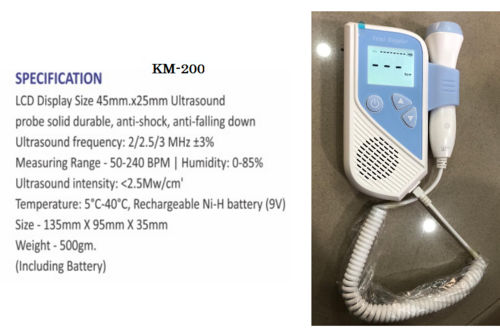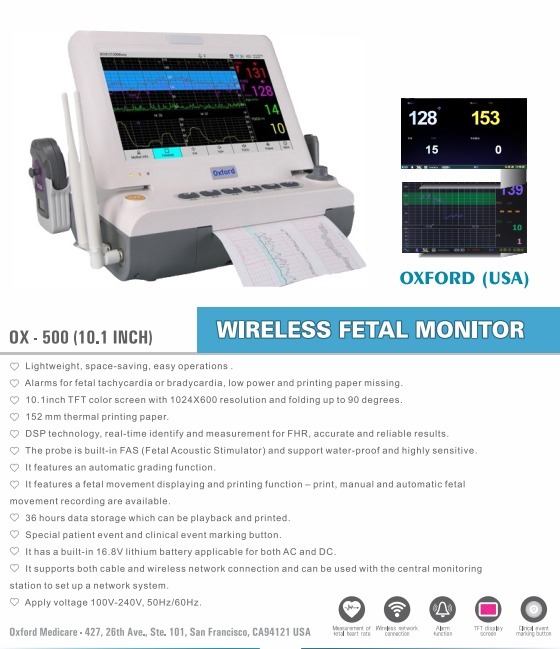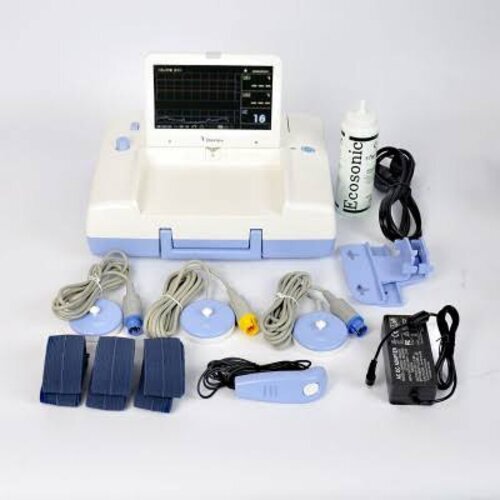Touch screen CTG machine
Product Details:
- Material PLASTIC
- Weight 5 Kilograms (kg)
- Product Type MEDICAL
- Suitable For HOSPITAL
- Dimension (L*W*H) 45*45*45 Inch (in)
- Color Code BLACK
- Use HOSPITAL USE
- Click to View more
Touch screen CTG machine Price And Quantity
- 50000.00 - 60000.00 INR/Piece
- 1 Piece
- 45000.00 INR/Piece
Touch screen CTG machine Product Specifications
- BLACK
- PLASTIC
- 5 Kilograms (kg)
- MEDICAL
- HOSPITAL USE
- HOSPITAL
- 45*45*45 Inch (in)
Touch screen CTG machine Trade Information
- Cash in Advance (CID)
- 50 Piece Per Day
- 7 Days
- Asia Australia Central America North America South America Eastern Europe Western Europe Middle East Africa
- All India South India Central India West India North India East India Gujarat Karnataka Kerala Lakshadweep Mizoram Meghalaya Manipur Andhra Pradesh Bihar Chandigarh Daman and Diu Goa Jharkhand Odisha Punjab Assam Delhi Dadra and Nagar Haveli Andaman and Nicobar Islands Arunachal Pradesh Chhattisgarh Haryana Himachal Pradesh Jammu and Kashmir Madhya Pradesh Maharashtra Nagaland Rajasthan Sikkim Tamil Nadu Telangana Tripura Pondicherry Uttar Pradesh Uttarakhand West Bengal
Product Description
A Fetal Monitor is a medical device used to track and assess the fetal heart rate FHR and uterine contractions during pregnancy and labor It helps healthcare providers monitor the wellbeing of the fetus and detect any signs of distress ensuring timely interventions if necessary
Principle of Fetal Monitoring
The fetal monitor measures and records
Fetal Heart Rate FHR Evaluates the babys heart activity to check for abnormalities
Uterine Contractions Tracks the frequency and intensity of contractions to assess labor progress
Types of Fetal Monitoring
1 NonInvasive Monitoring External Monitoring
Ultrasound Transducer
Uses Doppler ultrasound technology to detect fetal heartbeats
Converts sound waves into electrical signals to display and record FHR
Tocodynamometer Toco
Measures uterine contractions using a pressuresensitive device placed on the mothers abdomen
It detects changes in abdominal pressure caused by uterine activity
2 Invasive Monitoring Internal Monitoring
Fetal Scalp Electrode FSE
A small electrode is attached to the fetal scalp to measure electrical signals from the fetal heart directly
Provides highly accurate FHR readings
Intrauterine Pressure Catheter IUPC
Inserted into the uterus to directly measure the strength of uterine contractions
Used when external monitoring is insufficient
Modes of Fetal Monitoring
Antepartum Monitoring Before Labor
Conducted during prenatal visits to check fetal health
Used in nonstress tests NST and contraction stress tests CST
Intrapartum Monitoring During Labor
Continuous monitoring during labor to detect any signs of fetal distress
Ensures safe delivery by guiding interventions like labor induction or cesarean section
Applications of Fetal Monitoring
HighRisk Pregnancies
Used for conditions like gestational diabetes preeclampsia or multiple pregnancies
Fetal Distress Detection
Identifies irregular heart rates that may indicate oxygen deprivation or other issues
Monitoring Preterm Labor
Tracks contractions and fetal health to manage premature births
Labor Management
Evaluates the impact of labor on fetal wellbeing guiding interventions such as the use of oxytocin or epidurals
PostIntervention Monitoring
Assesses fetal response after procedures like amniotomy or epidural anesthesia
Advantages of Fetal Monitoring
NonInvasive Options External monitoring poses minimal risk to the mother and baby
RealTime Feedback Continuous observation allows for immediate intervention
Improves Outcomes Reduces the risk of complications during labor and delivery
Accurate Measurements Provides precise data for decisionmaking
Limitations
False PositivesNegatives May sometimes give misleading results leading to unnecessary interventions
Discomfort in Prolonged Use Continuous external monitoring can be uncomfortable for the mother
Invasive Risks Internal monitoring may carry a slight risk of infection or injury
Summary
Fetal monitors are essential tools in obstetrics ensuring the safety of both the mother and baby by continuously tracking fetal heart rate and uterine activity With options for external and internal monitoring they are vital for managing highrisk pregnancies labor and delivery reducing complications and improving outcomes

Price:
- 50
- 100
- 200
- 250
- 500
- 1000+
Other Products in 'Fetal Monitor' category
 |
KORRIDA MEDICAL SYSTEMS
All Rights Reserved.(Terms of Use) Developed and Managed by Infocom Network Private Limited. |

 Send Inquiry
Send Inquiry




